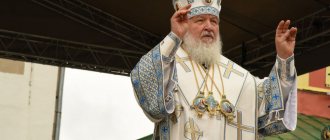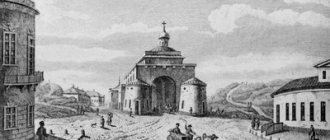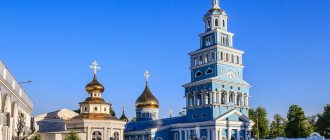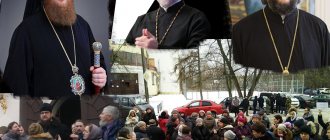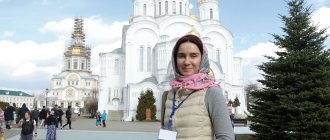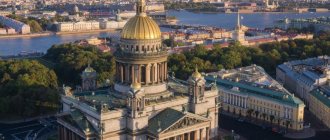| Kazan St. Nicholas Cathedral, February 21, 2010. Photo by Andrey Petrovich Sychev, from the site sobory.ru |
Kazan and Tatarstan diocese
of the Tatarstan Metropolis of the Russian Orthodox Church
- Diocesan administration: Russia, 420111, Republic of Tatarstan, Kazan, st. Mislavskogo, 15/9
- Tel. (reception, fax), 292-01-45 (secretary of the Bishops' Council), 292-01-75 (accounting), 292-01-84 (diocesan secretary, fax)
- Official website: , archives 2001-2012 -
- Canonical territory: gg. Kazan, Naberezhnye Chelny; Agryzsky, Apastovsky, Arsky, Atninsky, Baltasinsky, Buinsky, Verkhneuslonsky, Vysokogorsky, Drozhzhanovsky, Elabuga, Zelenodolsky, Kaybitsky, Kamsko-Ustinsky, Kukmorsky, Laishevsky, Mamadyshsky, Mendeleevsky, Menzelinsky, Pestrechinsky, Rybno-Slobodsky, Sabinsky, Tetyushsky, Tukaevsky, Tyulyachinsky districts of the republic. Tatarstan
- Cathedrals: Annunciation Cathedral in Kazan, St. Nicholas Cathedral in Kazan, Peter and Paul Cathedral in Kazan
- On the map: Yandex.Map, Google map
In 1555, by decree of Tsar Ivan the Terrible, under the Moscow Metropolitan Macarius, the Kazan diocese was established by a conciliar resolution, to which, in the rank of Archbishop of Kazan and Sviyazhsk, the abbot of the Tver Selizharov monastery, Gury (Rugotin), was appointed, who went to Kazan with Archimandrites Barsanuphius and German and the “mandatory memory “: do not involuntarily bring people into baptism, treat people of other faiths meekly, with tenderness, do not inflict cruelty on them, and, if necessary, release them from the court of governors and governors.
In hierarchical terms, the Kazan diocese, which belonged to the Moscow Metropolitanate, took third place among the Eastern Russian dioceses after Moscow (metropolitanate) and Novgorod (archdiocese). Since January 26, 1589 - metropolitanate. Geographically, the Kazan diocese consisted of: in the southwest - up to the Sura River, the Nagornaya Side (Kozmodemyansk, Vasilsursk, Cheboksary, Tsivilsk, Sviyazhsk, Tetyushi) and the Meadow Side (Sanchursk, Tsarevokokshaysk); in the northwest - all lands up to the Vetluga River; part of the Vyatka lands to the middle of the Vyatka River, which since 1658 have been transferred to the newly established Vyatka diocese; in the east - the lands of the Kazan, Astrakhan, and partly Siberian kingdoms (from 1586 Ufa and Birsk included); in the south - the lands of the Astrakhan kingdom to the Tersky town on the Terek River, which from 1602 went to the newly formed Astrakhan diocese. By 1917, the territory of the Kazan diocese was limited to the Kazan province.
From 1922 to 1938 there was a renovationist diocese of the same name.
On June 11, 1993, the Yoshkar-Ola diocese was separated from the Kazan diocese within the Mari El Republic.
On June 6, 2012, independent Almetyevsk and Chistopol dioceses were allocated, after which the northeastern half of Tatarstan remained within the Kazan diocese - the cities of Kazan and Naberezhnye Chelny, as well as Agryz, Apastovsky, Arsky, Atninsky, Baltasinsky, Buinsky, Verkhneuslonsky, Vysokogorsky, Drozhzhanovsky , Elabuga, Zelenodolsky, Kaybitsky, Kamsko-Ustinsky, Kukmorsky, Laishevsky, Mamadyshsky, Mendeleevsky, Menzelinsky, Pestrechinsky, Rybno-Slobodsky, Sabinsky, Tetyushsky, Tukaevsky and Tyulyachinsky districts. At the same time, the Kazan See was designated the center of the Tatarstan Metropolis.
Historical names
- Kazan and Sviyazhskaya (February 3, 1555 - January 26, 1589)
- Kazan and Astrakhan (January 26, 1589 - 1602)
- Kazan and Sviyazhskaya (1602 - October 16, 1799)
- Kazan and Simbirsk (October 16, 1799 - February 10, 1832)
- Kazan and Sviyazhskaya (February 10, 1832 - mentioned December 14, 1930)
- Kazan and Tatar (mentioned February 25, 1948)
- Kazan and Chistopol (1949 - December 26, 1957)
- Kazan and Mari (December 26, 1957 - June 11, 1993)
- Kazan and Tatarstan (June 11, 1993)
Statistics
- 1904 - Churches - 746, chapels and houses of worship - 326. Clergy - 1521 (archpriests - 40, priests - 713, deacons - 30, psalmists - 738). Orthodox population - 1,480,216, Old Believers - over 17,399, Gentiles - 767,238, Protestants - 735, Catholics - 1,203. Church libraries - 620.
- 1912 - Bishops' houses - 2. Churches - 739, chapels - 336. Monasteries - 23 (10 women's), 2 women's communities. Theological Academy, Theological Seminary, 3 theological schools, 589 church schools, the central Tatar school under the Brotherhood of St. Gury (1864).
- January 1, 1958 [1] - 31 registered temples/houses of worship.
- December 2010 - parishes - 272, churches - 221 (including affiliated - 36, monasteries - 23, chapels - 25, hospitals - 4, prisons - 8), priests - 330, deacons - 68. In a number of settlements of Tatarstan There are spiritual and educational courses. 13 printed periodicals of various formats. 6 Orthodox television and radio programs [2].
- August 1, 2013 - 145 churches, 35 chapels; 12 houses of worship with a throne; 138 parishes that have legal registration, 9 that do not; prayer rooms of any kind on the territory of monasteries or at institutions (secular educational institutions, correctional institutions, military units, hospitals, etc.) - 24; full-time clergy: 208 priests, 32 deacons; parish clergy: 152 priests, 26 deacons; celibate and widowed clergy: 36 priests, 5 deacons; monastic parish clergy (in robes or cassocks): 20 priests, 1 deacon; monastics staying in monasteries: male monasticism without ordination - 13, male monasticism with ordination - 49, female monasticism - 19. Spiritual and educational courses operate in a number of settlements in Tatarstan. 13 printed periodicals of various formats. 6 Orthodox television and radio programs. [2]
Historical reference
In 1555, by decree of Tsar Ivan the Terrible, under the Moscow Metropolitan Macarius, the Kazan diocese was established by a conciliar resolution, to which, in the rank of Archbishop of Kazan and Sviyazhsk, the abbot of the Tver Selizharov monastery, Gury (Rugotin), was appointed, who went to Kazan with Archimandrites Barsanuphius and German and the “mandatory memory “: do not involuntarily bring people into baptism, treat people of other faiths meekly, with tenderness, do not inflict cruelty on them, and, if necessary, release them from the court of governors and governors. In hierarchical terms, the Kazan diocese, which belonged to the Moscow Metropolitanate, took third place among the Eastern Russian dioceses after Moscow (metropolitanate) and Novgorod (archdiocese). Since January 26, 1589 - metropolitanate.
Geographically, the Kazan diocese consisted of: in the southwest - up to the Sura River, the Nagornaya Side (Kozmodemyansk, Vasilsursk, Cheboksary, Tsivilsk, Sviyazhsk, Tetyushi) and the Meadow Side (Sanchursk, Tsarevokokshaysk); in the northwest - all lands up to the Vetluga River; part of the Vyatka lands to the middle of the Vyatka River, which since 1658 have been transferred to the newly established Vyatka diocese; in the east - the lands of the Kazan, Astrakhan, and partly Siberian kingdoms (from 1586 Ufa and Birsk included); in the south - the lands of the Astrakhan kingdom to the Tersky town on the Terek River, which from 1602 went to the newly formed Astrakhan diocese. By 1917, the territory of the Kazan diocese was limited to the Kazan province.
From 1922 to 1938 there was a renovationist diocese of the same name.
On June 11, 1993, the Yoshkar-Ola diocese was separated from the Kazan diocese within the Mari El Republic.
On June 6, 2012, independent Almetyevsk and Chistopol dioceses were allocated, after which the northeastern half of Tatarstan remained within the Kazan diocese - the cities of Kazan and Naberezhnye Chelny, as well as Agryz, Apastovsky, Arsky, Atninsky, Baltasinsky, Buinsky, Verkhneuslonsky, Vysokogorsky, Drozhzhanovsky , Elabuga, Zelenodolsky, Kaybitsky, Kamsko-Ustinsky, Kukmorsky, Laishevsky, Mamadyshsky, Mendeleevsky, Menzelinsky, Pestrechinsky, Rybno-Slobodsky, Sabinsky, Tetyushsky, Tukaevsky and Tyulyachinsky districts. At the same time, the Kazan See was designated the center of the Tatarstan Metropolis.
Diocesan departments
- information and publishing
- for youth work
- missionary department
- social service
- religious education and catechesis
- in relations with medical and healthcare authorities
- on combating drug addiction and alcoholism
- on relations with the armed forces
- on relations with law enforcement agencies
- on the canonization of saints
- pilgrimage
- Orthodox Center for the Deaf
- Brotherhood of Saint Gurias
Historical names
- Kazan and Sviyazhskaya (February 3, 1555 - January 26, 1589)
- Kazan and Astrakhan (January 26, 1589 - 1602)
- Kazan and Sviyazhskaya (1602 - October 16, 1799)
- Kazan and Simbirsk (October 16, 1799 - February 10, 1832)
- Kazan and Sviyazhskaya (February 10, 1832 - mentioned December 14, 1930)
- Kazan and Tatar (mentioned February 25, 1948)
- Kazan and Chistopol (1949 - December 26, 1957)
- Kazan and Mari (December 26, 1957 - June 11, 1993)
- Kazan and Tatarstan (June 11, 1993)
Archpastors
- St. Gury (Rugotin) (February 3, 1555 - December 5, 1563) [3]
- St. German (Sadyrev-Polevoy) (March 12, 1564 - November 6, 1567)
- Lawrence I (February 9, 1568 - formerly July 13, 1574)
- Vassian (February 14 - May 21, 1575)
- Tikhon I (Khvorostinin) (July 5, 1575 - June 14, 1576)
- Jeremiah (1576 - 1581)
- Cosmas (December 29, 1581 - 1583)
- Tikhon II (1583 - March 23, 1589)
- Sschmch. Hermogenes (13 May 1589 - 3 July 1606) [4]
- Ephraim (Khvostov) (August 1606 - December 26, 1613)
- Matthew (February 7, 1615 – January 13, 1646) [5]
- Simeon (or Simon) Serb (February 7, 1646 - September 26, 1649)
- Cornelius I (January 13, 1650 - August 17, 1656)
- Lawrence II (July 26, 1657 - November 11, 1672)
- Cornelius II (March 16, 1673 - August 6, 1674) [6]
- Joasaph (September 6, 1674 – January 30, 1686) [7]
- Adrian (21 March 1686 - 24 August 1690)
- Marcellus (8 September 1690 – 21 August 1698)
- Tikhon (Voinov) (March 25, 1699 - March 23, 1724) [8]
- Sylvester (Kholmsky-Volynets) (July 25, 1725 - December 30, 1731)
- Hilarion (Rogalevsky) (March 26, 1732 - March 29, 1735)
- Gabriel (Russian) (September 17, 1735 - March 9, 1738)
- Luka (Konashevich) (March 9, 1738 - October 9, 1755)
- Gabriel (Kremenetsky) (October 20, 1755 - July 25, 1762) [9]
- Veniamin (Putsek-Grigorovich) (July 25, 1762 - March 17, 1782) [10]
- Anthony (Gerasimov-Zybelin) (April 25, 1782 - March 5, 1785)
- Ambrose (Podobedov) (March 27, 1785 - October 16, 1799)
- Serapion (Alexandrovsky) (October 21, 1799 - December 11, 1803)
- Pavel (Zernov) (December 18, 1803 - January 14, 1815)
- Ambrose (Protasov) (February 7, 1816 - November 6, 1826)
- Jonah (Pavinsky) (November 6, 1826 - February 3, 1828)
- St. Filaret (Amphitheaters) (February 25, 1828 - September 19, 1836) [11]
- Vladimir (Uzhinsky) (September 19, 1836 - March 1, 1848)
- Grigory (Postnikov) (March 1, 1848 - October 1, 1856)
- Afanasy (Sokolov) (November 3, 1856 - November 9, 1866)
- Anthony (Amphitheaters) (November 9, 1866 - November 8, 1879)
- Sergius (Lyapidevsky) (January 11, 1880 - August 21, 1882)
- Palladium (Raev-Pisarev) (August 21, 1882 - September 29, 1887)
- Pavel (Lebedev) (September 29, 1887 - April 23, 1892)
- Vladimir (Petrov) (May 7, 1892 - September 2, 1897)
- Arseny (Bryantsev) (October 4, 1897 - February 8, 1903)
- Dimitry (Kovalnitsky) (February 8, 1903 - March 26, 1905)
- Dimitry (Sambikin) (March 26, 1905 - March 17, 1908)
- Nikanor (Kamensky) (April 5, 1908 - November 27, 1910)
- Jacob (Pyatnitsky) (December 10, 1910 - 1918) [12]
- Alexy (Dorodnitsyn) (1911) v/u, ep. Chistopolsky
- Sschmch. Joasaph (Udalov) (March 21, 1921 - January 4, 1922) v/u, bishop. Mamadyshsky [13]
- Sschmch. Joasaph (Udalov) (August 21, 1922 - May 15, 1923) v/u, bishop. Chistopolsky
- Afanasy (Malinin) (December 1923 - ?) bishop. Spassky, then Cheboksary
- Mitrofan (Polikarpov) (1925) v/u, ep. Bugulminsky
- John (Shirokov) (1930) v/u, ep. Mari
- Irenaeus (Shulmin) (1930) v/u, ep. Elabuga
- Irenaeus (Shulmin), 2nd time (1933) in/u, ep. Mamadyshsky
- Ilariy (Ilyin) (1944 - 1945) high school bishop. Ulyanovsky
- Korniliy (Popov), high school bishop. Gorkovsky [15]
- Mikhail (Voskresensky) (June - November 23, 1960) senior, bishop. b. Chkalovsky
- John (Timofeev) (November 20 - December 8, 2020) senior, metropolitan. Yoshkar-Olinsky
Orthodoxy in Tatarstan has many websites
There are many online resources that are dedicated to Christianity in this region. One of the most famous is the website “Orthodoxy in Tatarstan”. It is also the official website of the Tatarstan Metropolitanate. It is very rich in various materials.
Tatarstan Metropolis official website
In fact, you can go here and find any information. Sermons and meetings of the Metropolitan - please, news of the Kazan Metropolis - as much as you like. There are also sections:
- Chistopol diocese.
- Almetyevsk diocese.
- Church news.
There is an extensive publications section covering a variety of topics. Here you can read about how a person relates to shrines, how the relationship between man and God is built, and what is remarkable about the lives of certain Christian ascetics.
In the “Media” section you can find photos and video reports about the life of the metropolis. There are even videos from TV channels here.
Any official information can be obtained here: there are contacts for pilgrims, information support, etc.
Another section is dedicated to monasteries and temples, where you can find out similar things about each of them:
- The name of the abbot.
- Mailing address.
- Telephone.
There is no separate website for Tatarstan dioceses. All the necessary information is focused on this.
In the Kazan diocese in 1579 they found an icon of the Kazan Mother of God
One of the most famous icons of the Christian world was found here in the Kazan diocese. This is how the legend tells about it:
“Reveal for yourself the icon of the Mother of God in the gray form. Do not show the image of your Lady either to the saint of the city, or to the ruler of the ruler, lower than a noble or rich, lower than a wise old man: but show your honest treasure, an inexhaustible source to those who come with faith, your wonderful image, a certain man from the simple, who has wisdom in shooting war, This young woman, ten years old, has the name Matrona. This wonderful maiden appeared and the blessed icon of the Theotokos. And after the fire in the same year and month, this maiden began to appear to her, her name was before the river, the icon of the Blessed Mother of God. And he wounded her in hail and cheerful about the icon of the Virgin Mary, the same Vid, the archbishop and governors, so that they would have the image of the Most Holy Theotokos from the Earthly: And the very one, I, more, follow the shallow of the Dragago Biser, an honest treasure, the icon of the Bogoroditsyn. ”
The subsequent fate of the icon is unclear. On the one hand, she has always been visible in urban legends of varying degrees of authenticity. They talked about miracles created in this image. Some of them deserve attention, while others are pure fiction.
List of the Kazan Icon of the Mother of God (original lost)
The most interesting thing is that although the icon did not seem to disappear anywhere, in the 19th century sources contradicted each other about the location of the original icon. Numerous lists made identification difficult.
The Kazan Icon of the Mother of God was never found after it went missing.
It is believed that the icon was stolen in 1904. She was later allegedly discovered in Spain. John Paul II wanted to personally return it to Russia, but the Orthodox clergy opposed the arrival of the Pope. Because of this, the icon of the Kazan Mother of God came to Russia much later, but the Orthodox were disappointed. It was indeed an old image, but not the same, not the authentic one.
Several more icons claimed to be the same one, but all of them were not tested by specialists, which does not prevent believers from venerating them.
“We raise rulers who are then sent to Muslim regions”
Considering that Kirill will now have to work in a “Muslim” region, many are interested in how his relations with adherents of Islam were built. As Realnoe Vremya's correspondent is assured by the chairman of the Yekaterinburg MMRO "In Memory of Defenders of the Fatherland" Nail Shaimardanov, who in the past worked as vice-speaker of the Sverdlovsk Regional Duma and deputy chairman of the region's Accounts Chamber, the ruler always got along with Muslims.
“The Ural Mukhtasibat (Spiritual Administration of Muslims of the Sverdlovsk Region - editor’s note) interacts fruitfully with the diocese,” says Nail Zalilovich. — We find a common opinion on a number of issues. We must pay tribute to the head of the Muslim Spiritual Directorate, Artur Khazrat [Mukhutdinov]: he and the delegation visited the diocese, the synagogue, and held warm meetings. I have not seen any negative information about Muslims from the metropolitan and the diocese. We do not have any confrontation.
Our interlocutor notes that Orthodox Christians and Muslims had similar problems in the Urals.
— Our region is considered Orthodox. And the Bishop, it would seem, had no problems with government authorities. And when there were events in the park, when the people refused to provide a place for the construction of the Church of St. Catherine, a difficult period began for the diocese [in relations with regional authorities]. Although in this regard the diocese has gone through all the formalities over the years. Muslims had approximately the same situation: it was planned to build a cathedral mosque on the Square of Peace and Reconciliation, the documents had all the signatures from the governor and the mayor, but now an ice arena is being built on the stilts of this mosque.
At the same time, Shaimardanov drew attention to an interesting detail. Kirill and his predecessor Vikenty (Morar), after working in Yekaterinburg, were transferred to places with a predominantly Muslim population.
— Bishop Vincent, with whom we worked very closely, was sent to Uzbekistan in 2011 (now he is Metropolitan of Tashkent and Uzbekistan, head of the Central Asian Metropolitan District - editor's note). And Uzbekistan is a Muslim country. Now Kirill is heading to Tatarstan. It is becoming a tradition for the Sverdlovsk region that we raise rulers who are then sent to Muslim regions. I don’t know what exactly guides the Russian Orthodox Church,” he laughs.
According to the Muslim leader, the new ruler will be “at court” in Kazan.
— How many times have we come to Tatarstan with official delegations of the Sverdlovsk region since the time of Shaimiev, we, including the Russians, listened with open mouths about the relations between the Russian Orthodox Church and the Muslims of the republic. And now Tatarstan remains an example. Thank Allah that you live like this. I hope that the new ruler will develop and maintain this line of good neighborliness,” concluded Nail Shaimardanov.
Bibliography
- Gortalov, N.K., Brief biographical information about the hierarchs of the Kazan diocese from its establishment to the present (1555-1885)
, Kazan, 1885, 36 p. - Nikanor (Kamensky), archbishop, Kazan archpastors
, Kazan: type. G. M. Vyacheslav, 1890. - Bogoslovsky, G.K., priest, Brief historical sketch of the Kazan diocese, with the application of biographical information about the Kazan archpastors
, Kazan, 1893. - Bogoslovsky, G.K., Reference book for the Kazan diocese
, Kazan, 1900, 612, XXI p. - Reference book of the Kazan diocese
, Kazan, 1909, 751, XXIV p. - Manuil (Lemeshevsky), archbishop, Catalog of Russian bishops, 1897-1957
. - Kireev, A., deacon, Bishops' departments of the Russian Orthodox Church 59-1984
, 1984.
The most popular priest of the Tatarstan diocese, Vladimir (Golovin), was defrocked in 2019
Archpriest Vladimir (Golovin) made a special contribution to the Orthodox life of Tatarstan and the popularization of Christianity. No one will argue that he is one of the most beloved Christian preachers by the public. This is clearly evidenced by the views on his official channel and people’s reviews.
Spiritual Lighthouse official channel
However, the highest clergy of the Orthodox Church had claims against Father Vladimir. One of the stumbling blocks was the so-called prayer by agreement - the spiritual practice of joint prayer, which was actively popularized by the archpriest.
Father Vladimir (Golovin) before the eruption was the most popular priest of the Tatarstan Metropolis, but even now people’s love for him remains
Attempts to first ban the priest from serving and then depose the priest aroused indignation among believers. Thousands of Orthodox Christians, lawyers, popular bloggers and clergy spoke out in support of him.
The discussion lasted about a year. Father Vladimir partially admitted his guilt, but stood his ground:
- He did not betray the Church, he always remained faithful to Orthodoxy.
- Enemies are weaving intrigues around him, who benefit from eliminating the famous priest.
This noisy story escalated into the fact that in April 2021, Vladimir’s father was defrocked. To which he reacted humbly and said that even though he was not listed as a priest, no one could forbid him to be Orthodox and preach the word of God.
The decision to defrock him can still be appealed. Supporters of Father Vladimir hope to focus on the incompetence of the accusers and the violation of legal norms by the church court. But no matter how these events ended, during his ministry Father Vladimir managed to become one of the most prominent figures in the modern Orthodox Church and, of course, in the Tatarstan Metropolis.
By leaving a comment, you accept the user agreement
Annunciation Cathedral of the Kazan Kremlin - the oldest in Tatarstan
Of all the buildings in Tatarstan, the most important for Christians, historians, cultural experts and just tourists can be called the Annunciation Cathedral of the Kazan Kremlin. It was built in the 16th century and remained a cathedral for a long time - until 1918.
This is, if not the oldest, then one of the oldest buildings in the city. Initially, it was created with an eye on the Assumption Cathedral of the Moscow Kremlin. From the very beginning, the builders understood that they were creating a high-status building that was important for the Christianity of Tatarstan.
Annunciation Cathedral of the Kazan Kremlin
The Annunciation Cathedral is a beautiful building with five domes (four in honor of the evangelists and one in honor of God). The corner domes are teardrop-shaped. The association is strengthened by their blue color, covered with stars, which reflects the dedication of the temple to the Queen of Heaven.
Cannons were fired at the Annunciation Cathedral, but it survived
The cathedral has gone through many restorations. Now only the central part of the original structure has been preserved. The building was especially damaged during Soviet times. They even fired cannons at him. Then there was an archive and a vegetable store here. But today the cathedral is again the property of the church, and many ancient relics have been returned to it.
Address: Republic of Tatarstan, Kazan, Kremlin, building 2.
The cathedral is open from 9.00 to 19.30 and can be reached from the Kremlevskaya metro station on routes No. 83, 89, 22, 28a, and 522.
...or on the cross?
As for Bishop Kirill, his background is very impressive. As Realnoe Vremya reported, at the Yekaterinburg department he had to “resolve” several conflicts, and not always successfully for the leadership of the Russian Orthodox Church. All this did not go unnoticed by the federal press. Some experts do not rule out that the scandals that have accumulated in recent years became the reason for Kirill’s transfer to another region for a similar position.
When hostilities began in the Donbass, the flag of New Russia was hung in the Yekaterinburg church in the name of St. Innocent. Humanitarian aid was also collected here for residents of the self-proclaimed Lugansk People's Republic. The Metropolitan forbade the rector Vladimir Zaitsev to serve in the church, sending him to the monastery on Ganina Yama for repentance. Later, after actions in defense of Vladimir’s father, Kirill returned him to his original place.
The Bishop planned to build St. Sophia Cathedral in the center of Yekaterinburg. Moreover, the religious building was supposed to be located on the banks of the Iset, in a park near the drama theater. However, the townspeople opposed the ruler’s plans. In 2021, it came to direct clashes with law enforcement agencies and athletes, which were accompanied by detentions of activists. The Bishop initially took an irreconcilable position towards the protesters, continuing to insist on the construction of the temple. But under pressure from the public and authorities, he was forced to retreat.
“Believers hope that the current concession is the last,” Kirill warned menacingly.
In 2021, it came to direct clashes with law enforcement agencies and athletes, which were accompanied by detentions of activists. Photo: Leonid Makarov/wikipedia.org
In addition, the confessor of the Sredneuralsky convent, schema-abbot Sergius (Romanov), began active work in his diocese. The clergyman shocked the public with his conspiracy theories, including about “digital slavery.” And in 2021, when the whole world went into quarantine, Sergius opposed such preventive measures. Other interesting information also began to emerge about the past of the schema-abbot and the order in the monastery. As a result, Patriarch Kirill of Moscow and All Rus' deposed him. But Sergius and his supporters took up defensive positions and did not leave the monastery.
At the height of the COVID-19 pandemic, the metropolitan had a disagreement with the governor of the Sverdlovsk region, Evgeny Kuyvashev. Secular authorities demanded the closure of churches in order to prevent coronavirus. Kirill replied that the governor was infringing on the feelings of believers, and drew attention to the operating shops where there were crowds of people. As a result, a regional decree was signed banning religious ceremonies.
